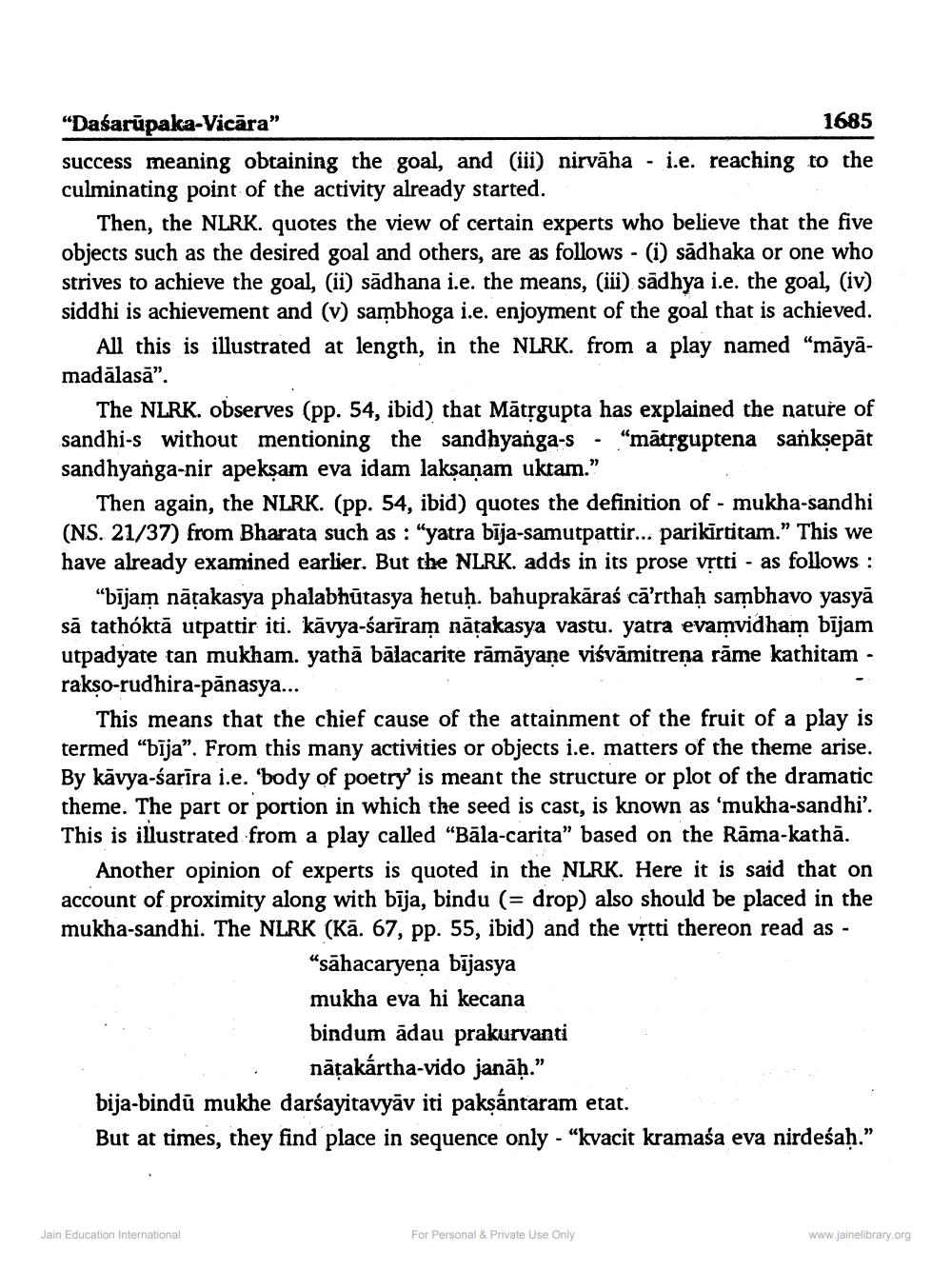________________
"Dasarūpaka-Vicāra”
1685 success meaning obtaining the goal, and (iii) nirvāha - i.e. reaching to the culminating point of the activity already started.
Then, the NLRK. quotes the view of certain experts who believe that the five objects such as the desired goal and others, are as follows - (i) sadhaka or one who strives to achieve the goal, (ii) sādhana i.e. the means, (iii) sadhya i.e. the goal, (iv) siddhi is achievement and (v) sambhoga i.e. enjoyment of the goal that is achieved.
All this is illustrated at length, in the NLRK, from a play named “māyāmadālasā”.
The NLRK. observes (pp. 54, ibid) that Mātrgupta has explained the nature of sandhi-s without mentioning the sandhyanga-s · "mātrguptena sanksepāt sandhyanga-nir apekşam eva idam laksanam uktam.”
Then again, the NLRK. (pp. 54, ibid) quotes the definition of - mukha-sandhi (NS. 21/37) from Bharata such as : "yatra bija-samutpattir... parikīrtitam." This we have already examined earlier. But the NLRK. adds in its prose vrtti - as follows:
"bījam nāțakasya phalabhūtasya hetuħ. bahuprakāraś cā’rthaḥ sambhavo yasyā sā tathóktā utpattir iti. kāvya-śarīram nāțakasya vastu. yatra evamvidham bījam utpadyate tan mukham. yathā bālacarite rāmāyane viśvāmitreņa rāme kathitam. rakṣo-rudhira-pānasya...
This means that the chief cause of the attainment of the fruit of a play is termed "bīja”. From this many activities or objects i.e. matters of the theme arise. By kävya-śarīra i.e. 'body of poetry is meant the structure or plot of the dramatic theme. The part or portion in which the seed is cast, is known as 'mukha-sandhi'. This is illustrated from a play called "Bāla-carita" based on the Rāma-kathā.
Another opinion of experts is quoted in the NLRK. Here it is said that on account of proximity along with bīja, bindu (= drop) also should be placed in the mukha-sandhi. The NLRK (Kā. 67, pp. 55, ibid) and the vȚtti thereon read as -
"sāhacaryeņa bījasya mukha eva hi kecana
bindum adau prakurvanti
• nāțakártha-vido janāḥ.” bija-bindū mukhe darśayitavyāv iti pakşántaram etat. But at times, they find place in sequence only - “kvacit kramasa eva nirdeśaḥ.”
Jain Education International
For Personal & Private Use Only
www.jainelibrary.org




